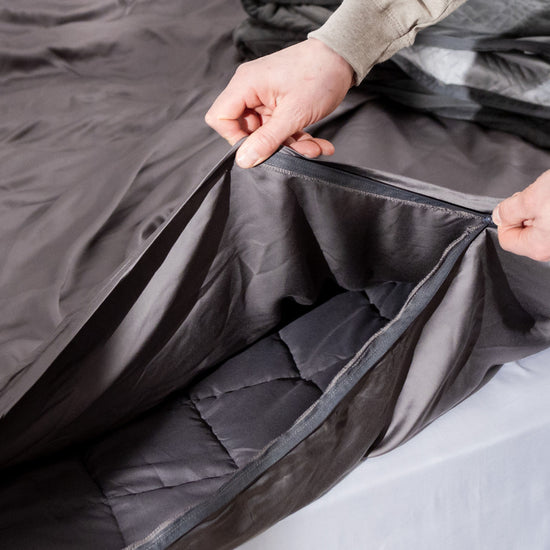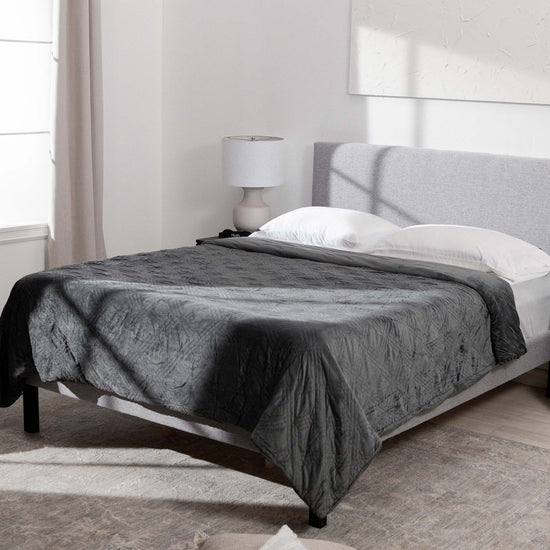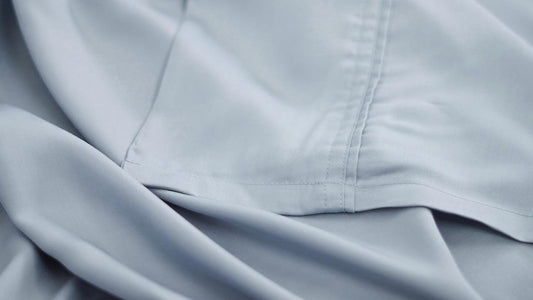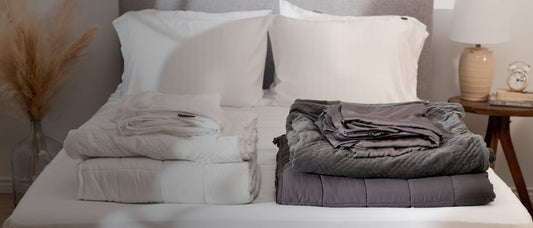There’s nothing quite as refreshing as a good night’s sleep - but did you know that the bedding you sleep on can drastically impact just how good (or bad!) your sleep is? This is because a range of factors - from thermal environments to personal preferences - will ultimately determine just how successful your shut-eye is.
So if you’re wondering whether a duvet, a comforter or a quilt is the best option for you, look no further! In the following guide, we’re taking a look at all different types of bedding (and their benefits and drawbacks) so you can choose the option that best aligns with your sleeping habits. So is your best bet a quilt, duvet or comforter? Let’s find out!
Why choosing the right bedding is important
As we mentioned briefly in the introduction, there are a number of key elements that contribute towards ‘good sleep’ - and by good sleep, we don’t just mean the number of hours of shut-eye you get per night. Scientifically speaking, ‘good sleep’ refers to deep, uninterrupted sleep (also known as REM sleep) which is absolutely vital for our physical and emotional wellbeing.
And while a number of other factors - such as screen time, light, and environmental noise - can impact our ability to get good sleep, so too can the wrong type of bedding. This is because our choice of bedding can impact our thermal environment - aka our preferred sleeping temperature - which is another crucial component of good sleep. So, let’s take a look at some different types of bedding, and when they’re best used.
What is a duvet?
A duvet is a thick, heavyweight blanket that is typically filled with some form of natural or synthetic fibres, intended to give the fabric weight and keep us warm as we sleep in colder temperatures. While duvet covers are typically white in colour, most people will use a duvet cover to both add comfort while also protecting the duvet itself from stains, spills, and tears - although always make sure that you’re sizing your duvet covers correctly; a queen duvet cover set should only be used on a queen size duvet.
And while duvets are different from quilts, there’s no such thing as a ‘duvet cover vs quilt cover’ debate; these terms mean the same thing: a cover for a blanket.
When to use a duvet
It’s important to note that personal preference plays a significant role when it comes to bedding choices; while some people might prefer a duvet all year round, others might reserve their duvets for autumn or winter months when the temperatures drop. That being said, a duvet cover is likely best suited for use during the winter months, as the heavyweight material will keep you warm and cozy at night when it gets even frostier outside. That said, do note that you might have to pep-talk yourself out of your warm duvet in the cold mornings!
It’s also noteworthy to mention that duvets require less maintenance than a comforter or a quilt, as they only need to be washed once a year. However, duvet covers, pillows, and other external bedding should be washed once every 2 weeks; take a look at our blog on how to wash a duvet for more guidance.
What is a comforter?
Similar to a duvet, a comforter is a thick blanket that typically goes on top of your bed and is usually there for decorative purposes - but that doesn’t mean they don’t make great sleeping blankets! Comforters differ from duvets in that they’re thinner and tend to come in one piece, whereas a duvet tends to comprise both the duvet insert and the corresponding cover, making it naturally thicker.
When to use a comforter
Comforters are great options for those who are ‘hot sleepers’ and only need a little bit of coverage at night. For those who live in changing climates - like us here in Canada - comforters can also be used to replace thicker duvets during the summer months; simply switch out your king size duvet cover for a lightweight comforter - no more clammy, sun-induced insomnia!
What is a quilt?
A quilt is a multi-layered, sometimes padded blanket, often used decoratively either on a sofa or as part of a bedding set. Quilts differ from comforters and duvets in a number of ways, but differ most notably by the fact that their fabric make-up results in a less flexible end-product; their multiple layers can often make quilts feel rather rigid, and less breathable than comforters or duvets when used for sleep. However, this all depends on the materials used.
When to use a quilt
That being said, quilts can be used for sleep, and might be best suited to those who prefer cooler nighttime temperatures, or prefer sleeping without much cover. If you do opt for a quilt, make sure to choose a hypoallergenic, soft fabric for ultimate comfort and breathability.
FAQs
What’s the difference between a quilt and a duvet?
The main difference between a quilt and a duvet is the thickness and weight; a quilt tends to be a piece of thinner multi-layered fabric, while a duvet is more heavyweight and comes with both a duvet insert and a duvet cover.
Duvet vs comforter: which is better?
Whether you opt for a duvet or a comforter depends largely on your sleeping preferences; if you live in a cold climate and don’t have any problems with hot flashes, a duvet can be a great way to keep warm all year round. For those who prefer cool sleeping, a comforter offers light coverage.






